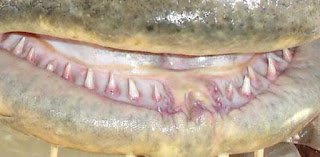Human African trypanosomiasis, also known as the sleeping sickness, is a vector-borne parasitic disease. Sleeping sickness is caused by protozoa of 2 organisms from the Trypanosoma Genus - namely the Trypanosoma brucei rhodesiense and Trypanosomoa brucei gambiense.
T.b.gambiense - results in a chronic condition which can extend in a passive phase for months or years before symptoms emerge. When the symptoms show up, the patient is already in an advanced disease stage where the central nervous system is affected. (90% of the reported cases)
Causes
Tsetse flies act as a vector of the Trypanosoma. Tsetse flies are infected when they consume blood from infected people, the parasites enter the midgut of the fly and multiply in the salivary glands.
Infected Tsetse flies go around biting people, leaving behind red, painful swollen wound when they inject the parasites into the skin tissue. The parasites will then enter the lymphatic system and pass into the bloodstream.
Symptoms of the disease
General
- Anxiety
- Drowsiness
- Fever
- Headache
- Increased sleepiness
- Swollen lymph nodes
disease it's name.
Infection
- Mother-to-child infection occurs when the trypanosome cross the placenta barrier and infect the fetus.
- Accidental infections have occurred in laboratories due to pricks from contaminated needles.
fatal!
Screening
Diagnosis must be made as early as possible before the neurological system is affected
to reduce complications.
Microscopic observation of:
- Blood smear
- Lymph node aspirates
- bone marrow
- Cerebrospinal fluid tests (in the later stage of the disease)
- Melarsoprol - used for both forms of infection. It is derived from arsenic and can be fatal to as much as 10% of the patients taking the drug.
- Eflornithine - effective against T.b.gambiense. Less toxic, alternative for Melarsoprol.
- Pentamidine - used for the treatment of 1st stage of T.b.gambiense infection. However, it can cause toxic or allergic side-effects.
- Suramine - treatment for the 1st stage of T.b.rhodesiense infection. Side effects in urinary tract and allergic reaction.









































